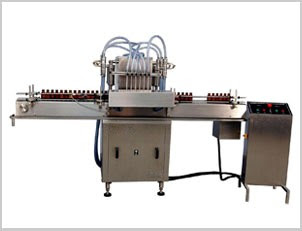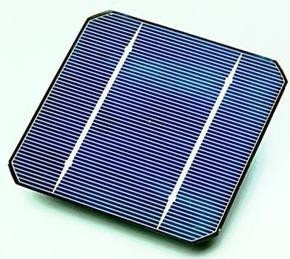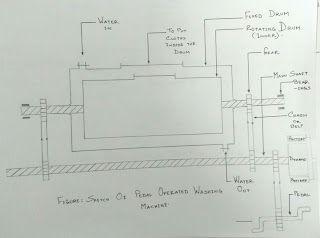MULTI SIZE BOTTLE FILLING MACHINE
ABSTRACT
In small scale industries bottle filling process
requires many workers. With the use of automatic machine, each process can have
smooth operation and with this the process of bottle filling reduces the
manpower requirements as well as operation time. One of the solutions is proposed in this
study for the variant in the bottle sizes. To achieve this system
control has been studied along with the various sensors and their functionality
in the existing plant. As the diameter of the bottle is the constraint for this
operation obviously the height is the parameter which is varying for the
different liquid storage in the bottle. Literature survey suggests that the
infrared proximity sensor is suitable to sense the height of the bottle. The
control system is arranged in such a way that the sensor will sense the height
and accordingly the liquid is filled in with the appropriate amount from the
solenoid valve.
Introduction
Introduction about bottle filling machine:-
The system can faster for the produce
product in factory. In
the industries, the
filling used because the
system to be operated with automatic. This
project is divided
into 4 sections; the loading section, the
conveyor section(transfer
section), filling section and
path divider section. The whole
sections are controlled by the Microcontroller. The mechanical
part of the project consist of
mechanical measuring and fabricating process,
while electrical part consist of
electrical wiring and programming. and now it is available in multi
size bottle filling system we can fill different amount of or the different
capacity bottles. The software of the
microprocessor theory includes
the electrical and
mechanical actuators for the
hardware will be showing
good result to fulfill the objective
of this project.
FIG1.1: bottle filling machine
Problem definition:-
The
problems that existing in the present machines
are that it can fill only a particular type of containers of certain height,
and the filling amount is as set by the operator. If the machine has to fill different
type (size) of container then again the operator has to set the filling amount
for each container. Time taken for filling will become more in such conditions.
Sometimes in special environments which are dangerous and not conductive for
human operation, the operator cannot go and set the filling amount. By this the
rate of production was affected due to the use of manual inspection systems .Sometimes
in special environments which are dangerous and not conductive for human
operation.
Function and Working:-
The
main objective of the project is to Design and Develop a Automatic liquid
filling to bottles of controller Integration. Programming the system in microcontroller
ladder logic diagram. To develop a filling machine which can fill same sizes of
containers on the bases of height same
principle can be used in different industries like medicine, oil, chemical
industries for filling liquid to different sized component by one machine.
FIG LAYOUT OF SYSTEM
WORKING
OF FILLING MACHINE
Bottles
are kept in position in a carton over a conveyor belt; they are sensed to
detect their presence. Infrared proximity sensors are used for sensing the bottles.
Depending on the output of the sensor the corresponding valve switch on and
filling operation takes place. If the particular bottle is not present then the
valve in that position is switched off, thereby avoiding wastage of the liquid.
The filling process is done based on timing. Depending on the present value of
the timer the valve is switched on for that particular period of time and the
filling is done.
FIG OVER VIEW OF SYSTEM
BLOCK DIAGRAM
FIG BLOCK DIAGRAM OF SYSTEM
COMPONENTS,
ADVANTAGE, LIMITATION AND APPLICATION
OF MULTI SIZE BOTTLE FILLING MACHINE
COMPONENTS USED:-
- DC MOTOR
- CONVEYOR BELT
- BEARING
- ROLLERS
- FRAMES
- SENSOR
- MICRO CONTROLLER
- SOLENOID VALVE
·
DC
GEARED MOTOR
Geared
DC motors can be defined as an extension of DC motor which already had its
Insight details demystified here. A geared DC Motor has a
gear assembly attached to the motor. The speed of motor is counted in terms of
rotations of the shaft per minute and is termed as RPM .The gear assembly helps
in increasing the torque and reducing the speed. Using the correct combination
of gears in a gear motor, its speed can be reduced to any desirable figure.
This concept where gears reduce the speed of the vehicle but increase its
torque is known as gear reduction. This Insight will explore all the
minor and major details that make the gear head and hence the working of geared
DC motor.
External Structure
At
the first sight, the external structure of a DC geared motor looks as a
straight expansion over the simple DC ones
SPECIFICATION: Speed- 30rpm
FIG DC MOTOR
Internal Structure
On opening the outer plastic
casing of the gear head, gear assemblies on the top as well as on bottom part
of the gear head are visible. These gear assemblies are highly lubricated with
grease so as to avoid any sort of wear and tear due to frictional forces. Shown
below is the top part of the gear head. It is connected to rotating shaft and
has one gear that allows the rotation. A strong circular imprint shows the
presence of the gear that rotates the gear at the upper portion.
FIG DC MOTOR( INSIDE
STRUCTURE)
FRAMES
FIG FRAME STRUCTURE
CONVEYORBELT
A belt conveyor consists of an endless belt of a
resilient material connected between
two pulleys and
moved by rotating
one of the
pulleys through a
drive unit gearbox, which is
connected to an electric motor.
FIG CONVEYOR
BELT
PVC
Roller conveyor is break down due to impact load so shutdown of plant works.
Roller are use for the transfer of the raw material, raw material filled from the Hooper and proper
mix the material , this material suddenly enter to the roller conveyor, due to
impact load Roller conveyor is break down.
FIG PVC ROLLER
CONVEYOR
Sometimes bearing attach with
the PVC roller, if this bearing is jammed than PVC will harmed, so here two
types of bearing can be used. One is attached to inside the PVC and also at the
main conveyer pulley. So if one pulley is damaged than other can convey. So
here the alternative bearings are use to avoid the damage.
The
development of belt conveyors, capable of transporting virtually any bulk
material at thousands of tons per hour in a continuous and uniform stream, has
been one of the most important innovations for modern industry.
Fig General arrengment of a belt conveyor.
Belt
conveyors have attained a dominant position in transporting bulk materials due
to such inherent advantages as their economy and safety of operation,
reliability, versatility, and practically unlimited range of capacities. In
addition, they are suitable for performing numerous processing functions in
connection with their normal purpose of providing a continuous flow of material
between operations. Recently, their conformity to environmental requirements
has provided a further incentive for selection of belt conveyors over other
means of transportation.
A
conveyor generally consists of a drive station, tail station, intermediate
standard frames, drive units, the rollers and the belting. In a typical all
above components contributes individually for overall performance, yet the
“ROLLER” are conspicuous by their vast number and also by their critical
function. Hence, it is of paramount importance that these rollers are designed,
manufacturing and maintained with maximum life, as the main criteria.
SOLENOID VALVE
q A solenoid
valve is an electromechanically operated valve.
The valve is controlled by an electric current through a solenoid: in the case of a
two-port valve the flow is switched on or off. The valve is controlled by an electric current through a solenoid: in the case of a
two-port valve the flow is switched on or off. It works by 12volt dc current
and controlled by pcb.
FIG Solenoid valve
Ø BEARING
As we all know, Bearings
are used to give
support the shaft of the roller
or idle pulley at both ends. They give also rotational motion of shaft by giving it support with very
less friction. Though
some friction is taken
place due
to the metal to metal contact
inside the bearing
between metal balls and metal casings, it is very negligible as compare with the direct contact
of rotating shaft
and main
frame of the conveyor.
Types of Bearings:
There
are many
types of bearings, each used for different purposes. These include
ball
bearings, roller bearings, ball thrust bearings, roller thrust bearings and tapered roller thrust bearings.
Ball Bearings
Ball bearings, as shown below, are probably the most common
type of bearing. They are found
in everything from inline
skates to hard
drives.
These bearings can handle
both radial and thrust loads, and are usually found in applications
where the load is relatively small.
Roller Bearing:-
A roller bearings use cylinders of slightly greater
length than diameter in the gap between outer and inner races.
Roller
bearings have higher radial load capacity than ball bearings, but a low axial
capacity and higher friction under axial loads. If the inner and outer races
are misaligned, the bearing capacity drops quickly compared to either a ball
bearing or a spherical roller bearing.
FIG BALL BEARING
Ø INFRARED
PROXIMITY SENSOR
An infrared
proximity sensor is a sensor
able to detect the presence of nearby objects without any physical contact. A
infrared proximity sensor often emits an electromagnetic field or a beam of electromagnetic radiation
(infrared,
for instance), and looks for changes in the field
or return signal. The object being sensed is often referred to as the infrared
proximity sensor's target. Different infrared proximity sensor targets demand
different sensors. For example, a capacitive photoelectric
might be suitable for a plastic target; an inductive
infrared proximity sensor always requires a metal target. The maximum distance
that this sensor can detect is defined "nominal range". Some sensors
have adjustments of the nominal range or means to report a graduated detection
distance.
FIG INFRARED SENSOR
Infrared proximity
sensors can have a high reliability and long functional life because of the
absence of mechanical parts and lack of physical contact between sensor and the
sensed object. Infrared proximity sensors are also used in machine vibration
monitoring to measure the variation in distance between a shaft and its support
bearing. This is common in large steam turbines,
compressors, and motors that use
sleeve-type bearings.
FIG SENSOR LAYOUT
Ø MICROCONTROLLER
Microprocessors
and microcontrollers are widely used in embedded systems products.
Microcontroller is a programmable device. A microcontroller has a CPU in
addition to a fixed amount of RAM, ROM, I/O ports and a timer embedded all on a
single chip. The fixed amount of on-chip ROM, RAM and number of I/O ports in
microcontrollers makes them ideal for many applications in which cost and space
are critical.
The Intel 8051 is
Harvard architecture, single chip microcontroller (µC) which was developed by Intel
in 1980, for use in implant systems. It was popular in the 1980s and early
1990s, but today it has largely been superseded by a vast range of enhanced
devices with 8051-compatible processor cores that are manufactured by more than
20 independent manufacturers including Atmel, Infineon Technologies and Maxim
Integrated Products.
8051
is an 8-bit processor, meaning that the CPU can work on only 8 bits of data at
a time. Data larger than 8 bits has to be broken into 8-bit pieces to be
processed by the CPU. 8051 is available in different memory types such as
UV-EPROM, Flash and NV-RAM.
The
microcontroller used in this project is AT89C51. Atmel Corporation introduced
this 89C51 microcontroller. This microcontroller belongs to 8051 family. This
microcontroller had 128 bytes of RAM, 4K bytes of on-chip ROM, two timers, one
serial port and four ports (each 8-bits wide) all on a single chip. AT89C51 is
Flash type 8051.
Figure Microcontroller
APPLICATION
Ø Dairy industries
Ø Soft
drinks industries
Ø Liquid
production companies
Ø Pharma
companies
ADVANTAGES & LIMITATIONS:-
v Advantages
Ø Hygiene and food
safety enhanced
Ø New way of
expanding the refrigerated
milk and milk beverages market.
Ø Its not consume
a more time
Ø The system is
extremely less issue to
human error
Ø Long- life and shelf-stable
of product is
possible
v Disadvantages
Ø Initial cost is high.
Ø Components which used are expensive.
Ø Its installation cost
is high
Design of Shaft & Bearing
DESIGN OF Shaft:-
Ø By considering the Roller as a
simply Supported beam.
Ø The roller is supported at the two
ends A and C respectively. the load on the roller is 55 kg, which is the point load on the
roller. The reactions at the two ends are Ra and Rc.
F=
80 kg
=80
=784.8 N
à For
centre load simply supported beam.
RA =
½×f
RB = ½×f
= ½ ×784.8 =
½ × 784.8
RA
= 392.4 N RB = 392.4N
à Vertical
shear.
A
to B V = +½×f
=
½× 784.8
=
392.4N
B to C V = -½×f
= -½× 784.8
=
-392.4N
Bending moment.
A to
B M = ½×Fx
= ½×784.8×550
=215820Nm
B
to C M = ½×F×(l-x)
= ½×784.8×(1100 -550)
=215820Nm
Diameter of Shaft = 20 mm.
Length of Shaft = 1200 mm.
Moment of Inertia.
J = ( π/64) ×
d4
= (π/64) ×24
= 0.785
Deflection
of shaft
α = (P(CL – 2C2
) / (4 ×E×J))×((360 × 60) / 2π))
where, C=
distance between shaft
and bearing centre.
α = (55(4.25×110 –
2(4.25)2) / ((4 × 2.1×106 × 0.785)) × ((360 × 60) / 2 π))
α = 12.37min.
Ø The permissible angular tilt in the
case of deep groove ball bearing is 16 min. As the deflection of the selected
shaft is well within this limit, the shaft could be considered safe.
FIG BELT
FRAME DESIGN
COST ESTIMATION
q Cost Estimation Table:-
Cost Estimation of Multi size bottle filling system
|
||||
No.
|
Name of component
|
No of component
Used
|
Cost/pie
(RS)
|
Total cost
|
1
|
DC motor
|
1
|
200
|
200
|
2
|
Conveyor belt
|
1
|
50
|
50
|
3
|
Plywood
|
1
|
260
|
260
|
4
|
Bearing
|
8
|
35
|
280
|
5
|
Rollers
|
5
|
10
|
50
|
6
|
Frame structure
|
1
|
600
|
600
|
7
|
Sensor
|
2
|
100
|
200
|
8
|
Micro controller
|
1
|
1500
|
1500
|
9
|
Transformer
|
2
|
500
|
1000
|
Total cost
|
4140
|
|||
CONCLUTION
In this
model we are providing
the facility of automatic
bottle filling. With
using this model
we are reducing
the human errors
and time . its make the
bottle filling work faster
and provide safety
to the drinks. Productivity is increase. So, it’s a
effective and useful for
commercial small scale industries
system .
REFERENCES
·
www.Gmpindia.com
For Further inquary
Email dibakarkarmokar2@gmail.com




















filling equipment is manufactured for a wide variety of products both thick and thin. Depending on the product characteristics, the liquid fillers will be manufactured with a specific type of filling principle. Though there may be variations in the controls used for each filling principle, many of the screens will remain similar or the same.
ReplyDeleteMulti Size Bottle Filling Machine >>>>> Download Now
Delete>>>>> Download Full
Multi Size Bottle Filling Machine >>>>> Download LINK
>>>>> Download Now
Multi Size Bottle Filling Machine >>>>> Download Full
>>>>> Download LINK mL
Thanks for sharing very informative post. PPSMachineries is the top Soft Drink Plant Manufacturer, Carbonated Soft Drink Plant Manufacturer, Soda Plant Manufacturer, Fruit Juice Making Plant, Automatic Juice Filling Machine, Automatic Water Filling Machine, Mineral Water Plant Manufacturers, Plastic Bottle Making Machine Manufacturer
ReplyDeletesupplier and exporter in Noida.
Best Bottle Filling Plant Manufacturers in Delhi
ReplyDeleteBest Bottle Filling Plant Manufacturers in Delhi
Thanks and that i have a keen offer: How Much Are House Renovations Stardew Valley old house renovation
ReplyDeleteCool
ReplyDelete